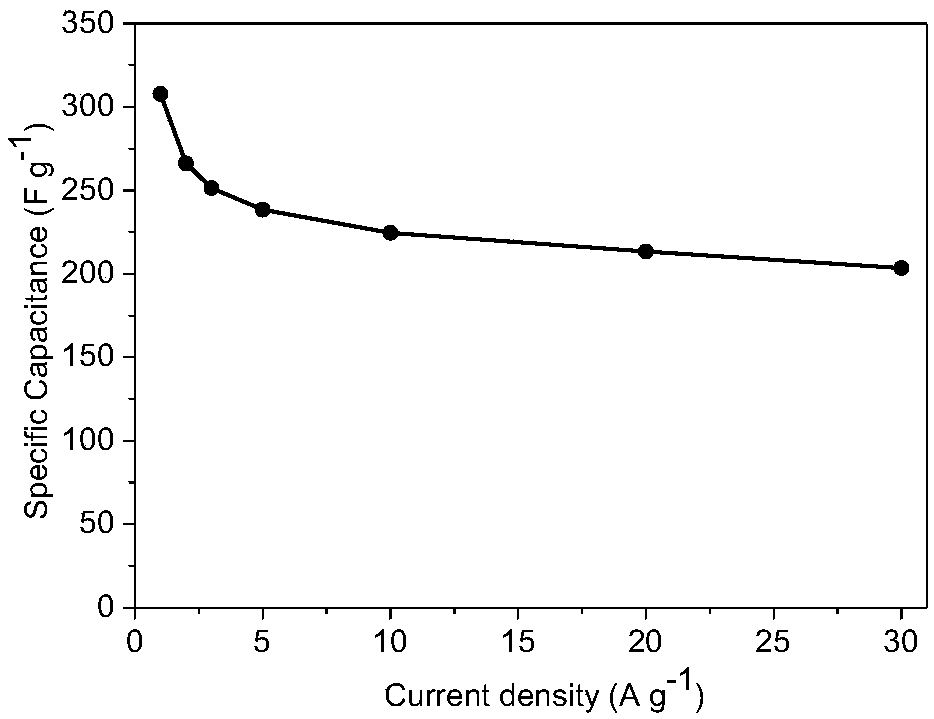Preparation of an inorganic salt-derived porous carbon electrode
A porous carbon electrode and electrode technology, applied in the direction of inorganic chemistry, carbon compounds, non-metallic elements, etc., can solve complex process conditions, a large number of corrosive compounds and other problems, and achieve the effect of improving the use of problems
- Summary
- Abstract
- Description
- Claims
- Application Information
AI Technical Summary
Problems solved by technology
Method used
Image
Examples
Embodiment 1
[0008] A certain amount of potassium benzoate was taken and calcined in a tubular atmosphere furnace at 700°C for 2 hours under a nitrogen atmosphere, the sample was taken out, washed with dilute hydrochloric acid after cooling, and porous carbon was obtained after drying. The specific capacitance, galvanostatic charge-discharge and cyclic voltammetry curves of the prepared materials are as follows: figure 1 shown.
Embodiment 2
[0010] The steps of this example and Example 1 are basically the same, the difference is that the calcination temperature is 600°C, and the specific capacitance, constant current charge and discharge and cyclic voltammetry curves of the prepared material are as follows figure 1 shown.
Embodiment 3
[0012] The steps of this example and Example 1 are basically the same, the difference is that the calcination temperature is 800°C, and the specific capacitance, galvanostatic charge-discharge and cyclic voltammetry curves of the prepared material are as follows: figure 1 shown.
PUM
 Login to View More
Login to View More Abstract
Description
Claims
Application Information
 Login to View More
Login to View More - R&D
- Intellectual Property
- Life Sciences
- Materials
- Tech Scout
- Unparalleled Data Quality
- Higher Quality Content
- 60% Fewer Hallucinations
Browse by: Latest US Patents, China's latest patents, Technical Efficacy Thesaurus, Application Domain, Technology Topic, Popular Technical Reports.
© 2025 PatSnap. All rights reserved.Legal|Privacy policy|Modern Slavery Act Transparency Statement|Sitemap|About US| Contact US: help@patsnap.com


